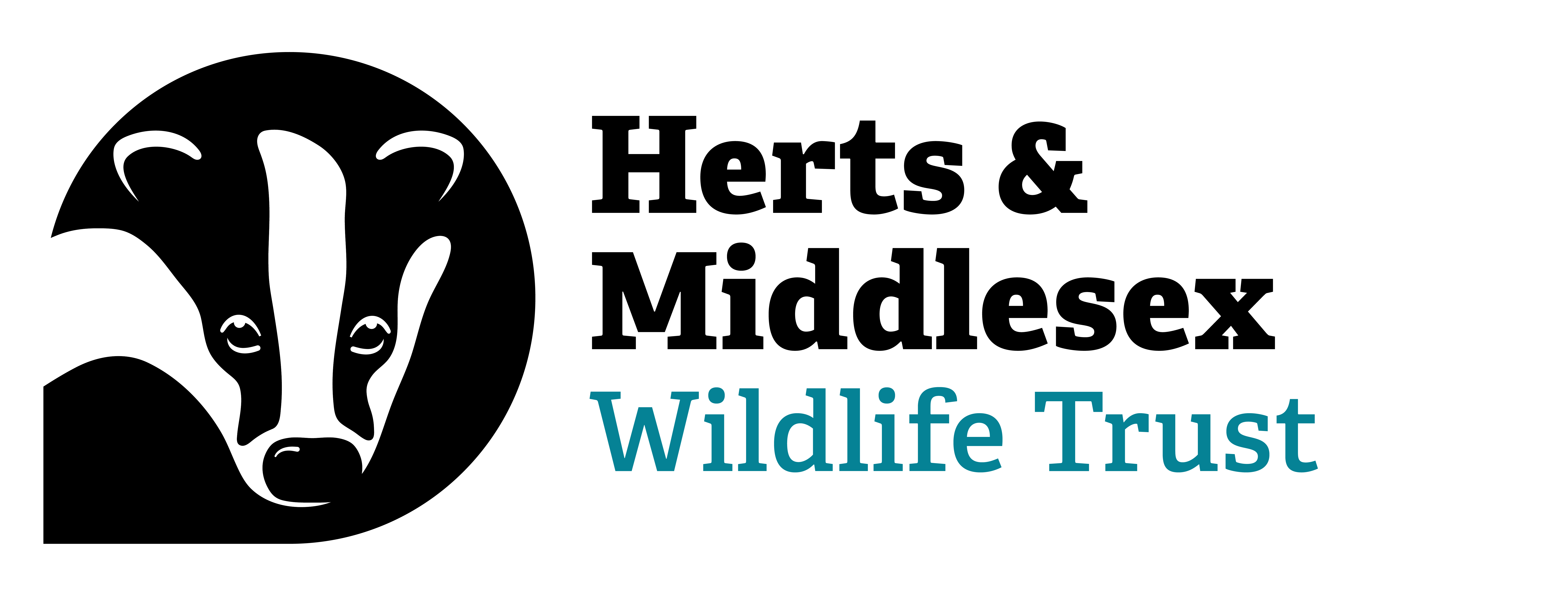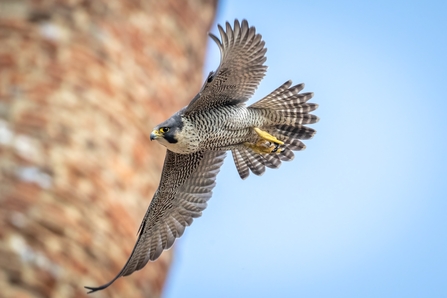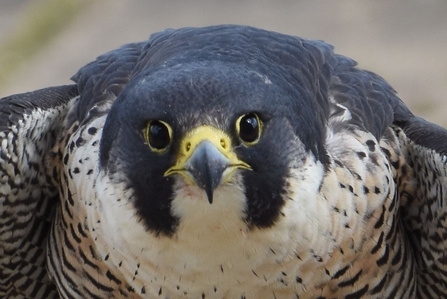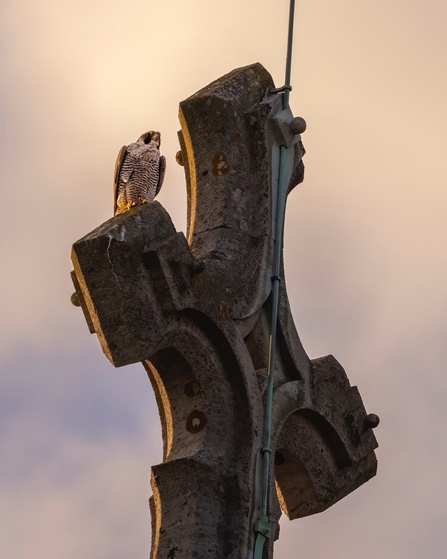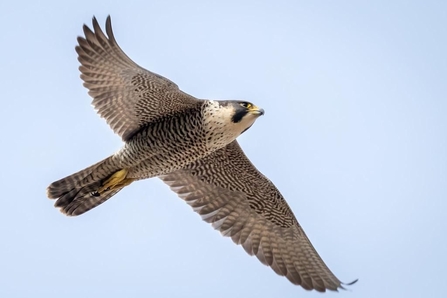The Peregrine Falcons at St Albans Cathedral have laid a second clutch of eggs, following an incident in which their first eggs of the breeding season were destroyed last month.
The pair of Peregrine Falcons at St Albans Cathedral have captured the public’s interest since their first chick hatched in 2022, and since 2023 the public have been able to watch their every move on the nesting tray high up on the Cathedral during their breeding season, courtesy of a live webcam feed.
Last year the webcam attracted over half a million views, and, following the incident on 7 April in which their three eggs were destroyed, understandably there has been a huge outpouring of public upset. Since then, the webcam has been turned off and a police investigation into the incident is ongoing. The birds have frequently been seen mating, and have gone on to defy the odds by breeding again this year - a first egg was laid on 4 May, a second on 7 May and there is still potential for more to follow.
The webcam, which has been sponsored by Opticron, will be switched back on, at 12.30pm on 7 May, enabling the public to follow the birds’ progress once again.
